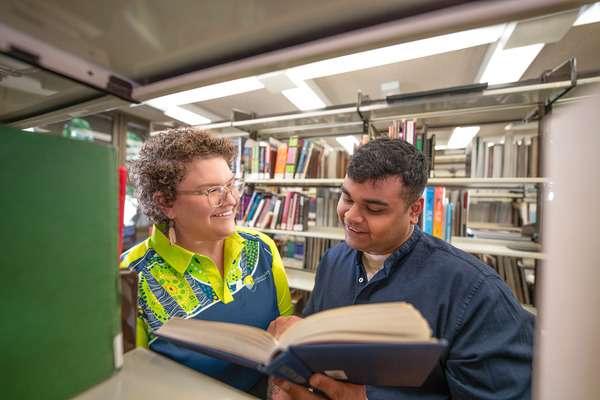Library
SEARCH RESOURCES
Training and Events
Join us for a range of online library workshops to learn how to effectively develop your research skills.
Library Help
Using Library Search
Get started with Library Search. Learn how to locate books, journals and more.

Browse Guides and Videos
Learn about research and finding information. Use our self-help guides and videos to get started, find specialised resources, and more.

Ask Us
We’re here to help. Get in touch with the Library for advice and guidance on your library needs.

aCQUIRe: Discover CQUniversity Research
Discover the innovative and unique research and datasets created by CQUniversity researchers, via our Institutional Research Repository.
Accessing and Borrowing Library Resources
All the information you need to access our online collections and borrow books and equipment
Library for Research
Managing Research Data
Find out how to manage, describe, and openly publish your research data.
Scholarly Publishing and Metrics
Learn about open access publishing, read and publish agreements, and research metrics.
Managing References
Organise your research literature using a range of tools including EndNote and Zotero.
Library for Teaching Staff
Using eReading Lists
Learn about using eReading Lists to streamline access for students and increase engagement with unit readings and resources.
Understanding Copyright
Use our guides and online training to ensure you are meeting copyright requirements in your course content.
Resources for Teaching
Obtain advice and guidance on selecting and using resources within your course content.
Library for Community
Alumni
As a graduate of CQUniversity you can keep updated with news and research in your field. Find out more about alumni library services.
Students from other universities
Studying at a university in Australia or New Zealand and want to use CQUniversity libraries? Find out about services available to you.
Community
Are you a community member and want to use your local CQUniversity library? Find out about services available to you.


